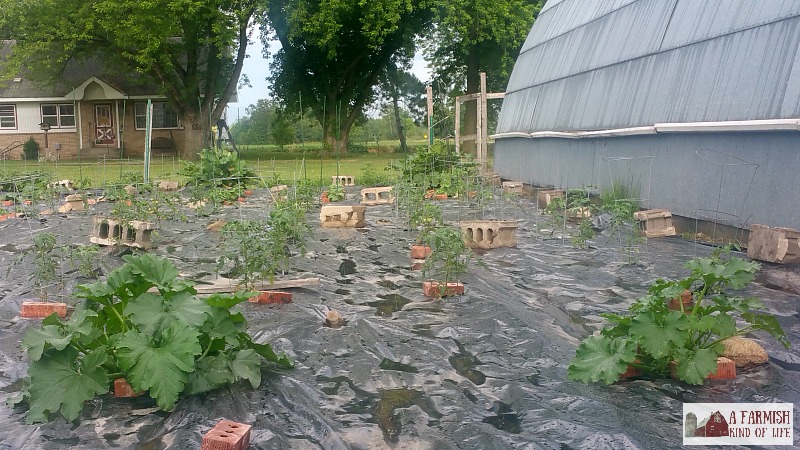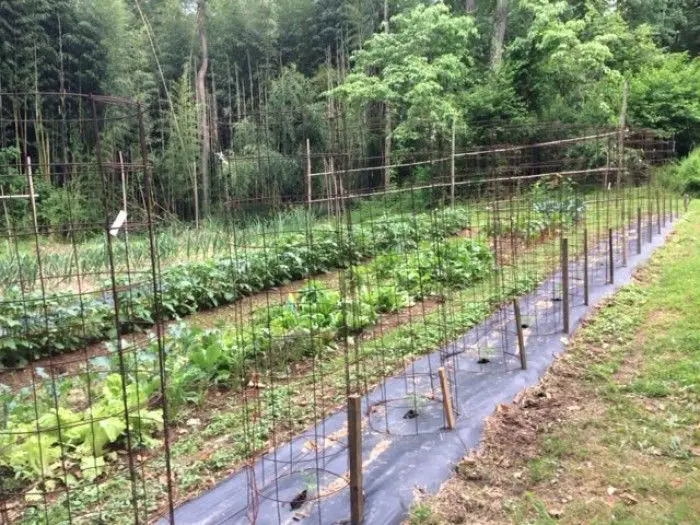Plastic mulch can be a gardener’s best friend. It helps conserve moisture and control weeds.
Using plastic mulch in your garden offers many benefits. It keeps the soil warm, which is great for early planting. The mulch also reduces water loss, saving you time and effort. Weeds have a tough time growing through the plastic, keeping your garden neat.
Plus, plastic mulch can improve soil health by reducing erosion. This guide will show you how to use plastic mulch in your garden. You will learn the steps to lay it down and the best practices to follow. Let’s dive in and make your garden thrive with plastic mulch!

Credit: www.aces.edu
Introduction To Plastic Mulch
Plastic mulch helps your garden in many ways. It keeps the soil moist. It stops weeds from growing. It also keeps the soil warm. Your plants can grow better with plastic mulch.
Plastic mulch saves water in your garden. It reduces the need for weeding. You spend less time working. It helps your plants grow faster. More fruits and vegetables can be grown. Your garden looks neat and clean.
| Type | Color | Benefits |
|---|---|---|
| Black Plastic | Black | Stops weeds, warms soil |
| Red Plastic | Red | Boosts fruit growth |
| White Plastic | White | Keeps soil cool |
Preparing The Garden Bed
First, clear the area of weeds and rocks. Loosen the soil with a shovel or tiller. Add compost or fertilizer. Mix it well into the soil. Smooth the soil surface. Water the soil lightly to settle it.
Measure and mark the rows. Place the plastic mulch on the soil. Secure the edges with staples or soil. Cut holes for plants. Space the holes evenly. Plant seeds or seedlings in the holes. Water the plants regularly. Check for weeds around the edges.
Choosing The Right Plastic Mulch
Plastic mulch comes in many colors. Black plastic mulch is the most common. It helps to warm the soil. Clear plastic mulch also warms the soil but can let weeds grow. Red mulch can help some plants like tomatoes. White plastic mulch keeps the soil cool. It is good for summer crops.
Thickness matters for plastic mulch. Thin mulch is cheap but does not last long. Thick mulch costs more but is durable. Choose based on your garden needs. Consider how long you need it. Thicker mulch can be reused. Thin mulch may need to be replaced each season.
Installing Plastic Mulch
You will need a few simple tools. A shovel, scissors, and stakes. A measuring tape and wheelbarrow are helpful. Gloves are also good to have.
First, measure the garden area. Next, clear the area of weeds and debris. Lay the plastic mulch flat on the ground. Cut slits for planting holes with scissors. Secure the edges with stakes. Finally, plant through the holes and water well.
Planting With Plastic Mulch
First, spread the plastic mulch over the garden bed. Secure the edges with soil or stakes. Mark where each plant will go. Use a sharp tool to cut an “X” or a circle. Make sure the hole is big enough for the plant. Be careful not to make the hole too large.
Dig a small hole in the soil through the opening. Place the plant in the hole and cover roots with soil. Press down gently around the plant base. Water the plants well after planting. Ensure water reaches the roots through the hole.
Maintaining The Mulched Garden
Water the garden early in the morning. This helps the plants absorb water before the sun gets hot. Use a drip system for even watering. Avoid overwatering to prevent root rot. Check the soil moisture often. Adjust watering based on weather.
Plastic mulch reduces weeds by blocking sunlight. Cut small holes for plants only. Pull any weeds that grow through these holes. Regularly check the mulch for tears. Fix any damage to keep weeds out. Edge the mulch to prevent weeds from creeping in.
Common Issues And Solutions
Pests can be a big problem in gardens. Plastic mulch helps keep pests away. The mulch blocks sunlight. This stops weeds from growing. Weeds can attract pests. Sometimes, pests hide under the mulch. Check under the mulch often. Remove any pests you find. You can also use traps. Traps catch pests before they cause damage. Use pest-resistant plants. These plants do not attract as many pests. They are a good choice for your garden.
Plastic mulch can make the soil very warm. This is good for many plants. But too much heat can harm some plants. Use a thermometer to check soil temperature. If the soil is too hot, water more often. This helps cool the soil. You can also use light-colored mulch. Light colors reflect heat. This keeps the soil cooler. Planting in the evening can also help. The soil will be cooler at night.

Credit: www.highmowingseeds.com
Environmental Impact
Plastic mulch can be a useful tool in gardening. It helps control weeds and retains soil moisture. Reduce the need for herbicides and save water.
Eco-friendly Alternatives
Plastic mulch can be harmful to the environment. It does not break down easily. Consider using biodegradable mulch. This type of mulch is made from natural materials. It breaks down over time. Leaves and straw are good examples. These materials enrich the soil as they decompose. Using these alternatives can reduce waste. It also helps keep the garden healthy.
Recycling And Disposal
Proper disposal of plastic mulch is essential. Recycle the plastic mulch if possible. Check local recycling programs for guidelines. Never burn plastic mulch. Burning releases harmful chemicals. If recycling is not an option, dispose of it properly. Place it in designated waste areas. This keeps harmful chemicals out of the soil and water. Always aim for the most environmentally friendly option.

Credit: afarmishkindoflife.com
Frequently Asked Questions
What Is Plastic Mulch?
Plastic mulch is a protective cover for soil made from polyethylene. It helps retain moisture, control weeds, and regulate soil temperature. Gardeners use it to enhance plant growth and yield.
How To Install Plastic Mulch?
To install plastic mulch, prepare the soil by removing weeds and debris. Lay the mulch flat, securing edges with soil or staples. Cut holes for plants.
Benefits Of Using Plastic Mulch?
Plastic mulch conserves soil moisture, suppresses weeds, and maintains consistent soil temperature. It also enhances crop yield and reduces soil erosion.
Can I Use Plastic Mulch For Vegetables?
Yes, plastic mulch is ideal for vegetables. It keeps soil warm, conserves moisture, and reduces weed growth, promoting healthier plants.
Conclusion
Plastic mulch can greatly improve your garden’s health and productivity. It controls weeds and retains soil moisture. Temperature regulation is another benefit. With these simple steps, your garden can thrive. Just remember to choose the right mulch type. Proper installation is key for success.
Enjoy the many benefits of plastic mulch in your garden. Happy gardening!

My mission is to help you bring the beauty of nature indoors with expert advice, detailed plant care guides, and creative design ideas.





Leave a Reply